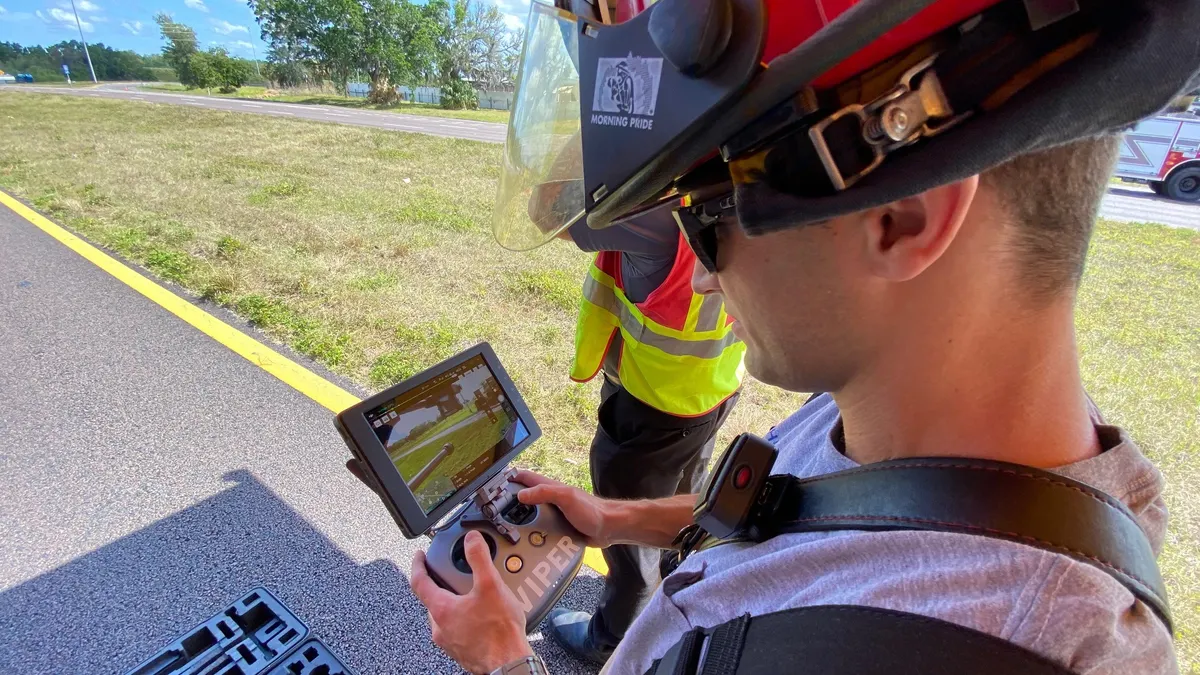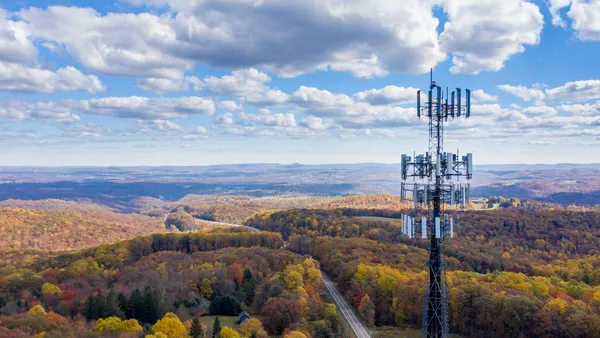Editor's note: This article was originally published in American City & County, which has merged with Smart Cities Dive to bring you expanded coverage of city innovation and local government. For the latest in smart city news, explore Smart Cities Dive or sign up for our newsletter.
The first time I witnessed a wildfire, I was four years old. As my grandma drove up Dominguez Canyon Road near Lake Piru, Calif., my face was pressed against the glass of the backseat window. The fire burned through the chaparral in crisscrossing lines, glowing orange against the pitch black of the nighttime hillsides. We were driving up to our family’s ranch to rescue my grandpa who had taken shelter in the workshop. The other structures had burned to the ground along with his car. On the drive back through the smoldering canyon, he described how the heat had been so intense that the windowpanes vibrated and flexed. It wasn’t until years later that I realized how close he had come to dying.
Stories like mine are common in California, ranging from narrow escapes on remote ranches to widespread devastation of communities like Altadena, Pacific Palisades, Berry Creek, Grizzly Flats, Greenville, Santa Rosa, Angora Ridge, Cedar Glen, Oakland, Redwood Valley, Malibu, and Paradise.
In the decades since the Piru Fire consumed my grandparents’ ranch, numerous technologies have been developed to help first responders and local authorities better prepare for and respond to wildfires. While these innovations have not yet advanced to the point of preventing destruction from catastrophic events like the Palisades and Eaton fires, there is reason for optimism. We may be nearing a technological tipping point that will allow us to relegate the most harrowing aspects of these disasters—particularly the loss of human life—to history.
Wildfire modeling has been around for more than 50 years. Quickly run, operationally ready models are used, with on-the-fly calibrations, to estimate the direction and rate at which a wildland fire will spread. These models are too simplistic to capture the dynamic, rapidly changing aspects of wildfires such as sudden accelerations, large fire whirls, hurricane-strength winds generated by the fire and abrupt wind shifts that alter the fire’s direction. Partially because of its perceived limitations, wildfire modeling has been weakly adopted for preparedness and response.
However, researchers like Dr. Janice Coen of the NSF National Center for Atmospheric Research are pioneering the next generation of fire spread models. Dr. Coen’s system integrates a high-resolution computer weather prediction model with fire behavior modeling to simulate complex airflow through mountainous terrain and the interactions between fire-generated heat and wind. In simple terms, the fire “creates its own weather.” This advance has allowed for a deeper understanding and better prediction of the transient, rapidly evolving behavior of large-scale wildfires.
Beyond modeling fire behavior, data on road networks and human decision making can be used to simulate evacuation traffic. Evacuation simulation can accurately predict how long it will take to clear neighborhoods, informing emergency managers and law enforcement how much notice is needed for safe egress. Simulation tools also predict traffic bottlenecks on the road network, allowing responders to test and refine different traffic control strategies in near real-time.
Combining evacuation simulations with fire modeling unlocks powerful capabilities for first responders and local authorities. In California and other fire-prone states, emergency managers combine these technologies to run detailed hypothetical fire scenarios then test different evacuation strategies using evacuation simulation. At times when fire risk is low, firefighters and law enforcement use these tools to conduct lifelike tabletop exercises where a group of first responders practice responding to a hypothetical scenario.
Perhaps most importantly, these technologies play a growing role in disaster-ready community planning. Simulations guide local authorities in prioritizing fuel treatment projects, safeguarding key egress routes and ensuring road networks can handle mass evacuations.
While evacuation-related fatalities commonly occur when individuals choose to stay behind, there are two reasons to believe that adoption of wildfire evacuation simulation technology will reduce such incidents. First, these tools vividly illustrate to the public how quickly wildfires can overtake a community and the dangers of delaying evacuation. Second, they embody a core principle of emergency management: bringing order to chaos. By testing and refining evacuation plans in advance, authorities can make precise, data-backed decisions about resource allocation and public communication.
Commentary is a space for state and local government leaders to share best practices that provide value to their peers. Email Smart Cities Dive to submit a piece for consideration, and view past commentaries here.
About the Author
Bowen Kyle is chief technology officer with Ladris and leads product strategy and AI development. He brings extensive experience in systems integration and deep expertise in applied mathematics and machine learning. Kyle's focus is on delivering solutions that bridge the gap between cutting-edge technology and real-world applications. He earned a Bachelor of Arts degree from UC Berkeley.










